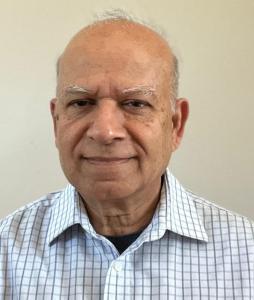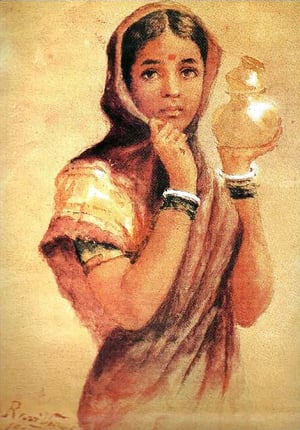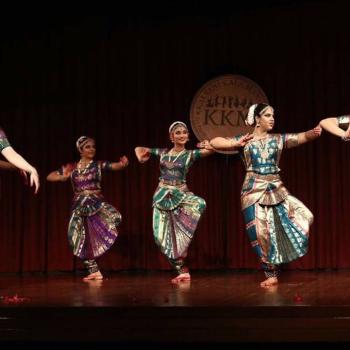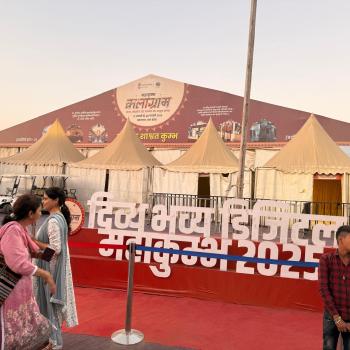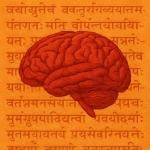Sanskrit: The Heartbeat of India
The word संस्कृत (Sanskrit) means polished or refined. The words like संस्कृति (sanskriti), meaning culture or civilization, and संस्कार (sanskara), meaning purification ceremony all have their roots in this word Sanskrit.
Most Indian languages, to a greater or lesser degree, have their roots in Sanskrit. In that sense, more than a mother tongue, Sanskrit is a grandmother tongue.
That influence extends beyond the boundaries of today’s India, to elsewhere in Asia. Nepal’s national motto is जननी जन्मभूमिश्च स्वर्गादपी गरीयसी. This was Bhagwan Ram’s response to Laxman during their conversation after the war was over and is found in the Valmiki Ramayana and means, ‘The mother and the mother-land are superior to even heaven.’
The name of the Bangkok airport in Thailand is called ‘Swarna Bhoomi (a Sanskrit term)’, which means the ‘land of Gold’ in English.
The name of the national airline of Indonesia is ‘Garuda’, which is also a Sanskrit word and is believed to be the carrier of Bhagwan Vishnu. There are several such instances in South Asia and Southeast Asia.
Not A Mere Language
The truth is that Sanskrit is not a mere language. It actually has been the heartbeat of our civilization for thousands of years that extending from the border with today’s Iran in the west and extending all the way to several South East Asian countries, the Himalayan countries such as Nepal, Tibet and Bhutan in the North and SriLanka in the South.
In fact, Sanskrit has been embedded in the DNA of our sanskriti, which by and large, we Bharatiya-s do not realize. Rajiv Malhotra states in his book ‘The Battle For Sanskrit’:
Sanskrit provides the vocabulary in which the Bharatiya civilization is encoded. He adds that Ramayana and Mahabharata have been woven in the textures of sanskriti of millions of people in every generation of this civilization for thousands of years. Production of an infinite amount of our literature has drawn very heavily from these two epics. Even those people who do not explicitly use Sanskrit as a means of communication often draw upon its knowledge from the translations of Sanskrit literature and many other subjects such as philosophy, yoga, meditation, arts, bhakti etc.
Thus, Sanskrit can be very effectively used to get to the heart and the innermost depth of our sanskriti and build a bridge between the still living past and as yet unpaved way of our future.
To understand the exalted status of Sanskrit, it’d be nice to know what Justice Kuldeep Singh of the Supreme Court had to say in 1994 while delivering a judgment that was related to the teaching of Sanskrit in government-run schools.
To understand the exalted status of Sanskrit, it would be nice to know what Justice Kuldeep Singh of the Supreme Court of India had to say while delivering a judgment that was related to the teaching of Sanskrit in the Government-run schools:
Learning of Sanskrit is undoubtedly necessary to protect our heritage. The stream of our culture would get dried up if we were to discourage the study of Sanskrit. Without the learning of Sanskrit, it’s not possible to decipher the Indian philosophy on which our culture and heritage are based. Sanskrit is the thread on which the pearls of the necklace of Indian culture are strung; break the thread and all the pearls will be scattered, even lost forever.
High Stakes for Sanskrit
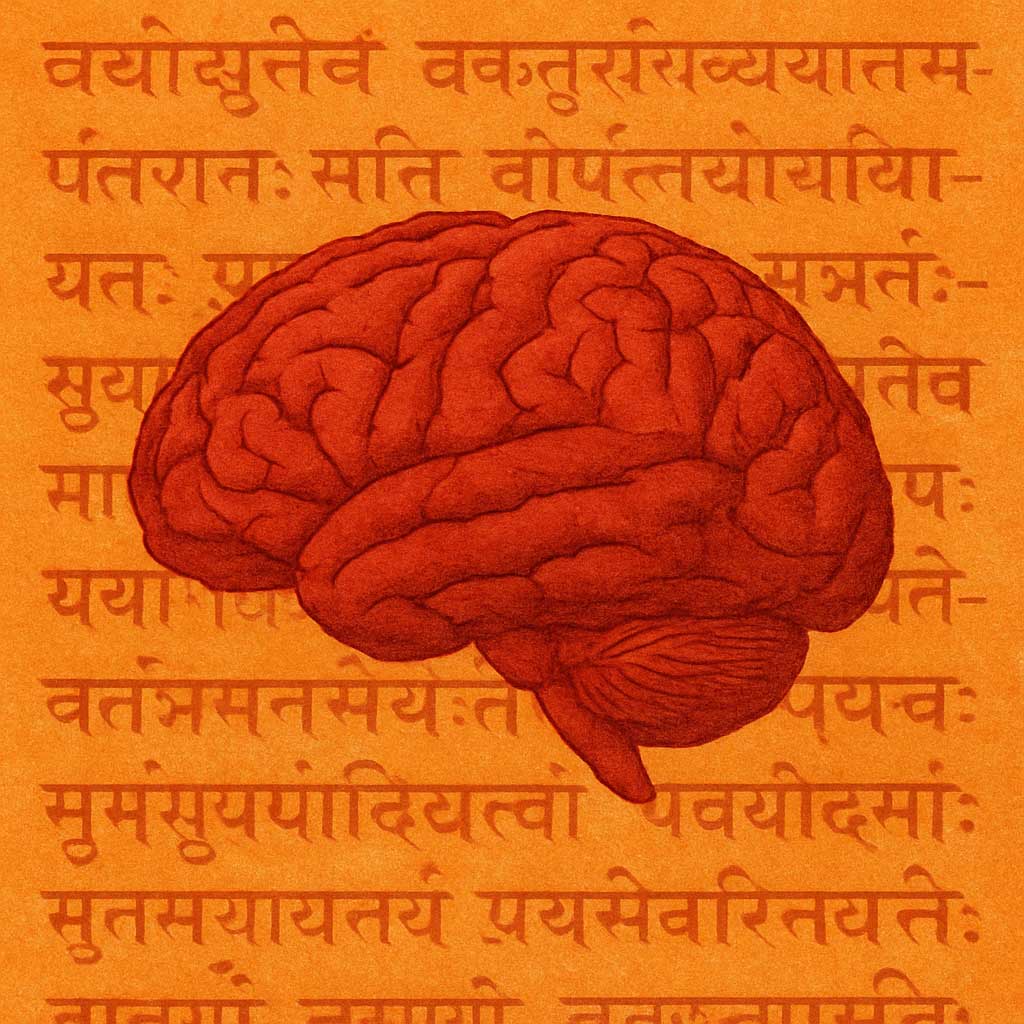
Rajiv Malhotra spells out in his book, “The Battle for Sanskrit”, what is at stake for Sanskrit:
- Meditation Mantras: The importance of meditation mantras derives from the large body of evidence accumulated by practitioners over the centuries that they produce effects that ordinary sounds do not. Today, several scientists the world over researching on meditation since last several years keep concluding what our rishis propounded. Thus these mantras are the building blocks of Sanskrit.
- Yagna Mantras: Many rituals and practices involve Sanskrit mantras chanted with specific intonations and precise steps. It’s not possible to substitute Sanskrit with any other language and get the same results and the same meaning.
- Indian Darshan or philosophy: Indian Darshan was conceived in Sanskrit and is a part of our living tradition of creative innovations in many intellectual disciplines.
- Sanskrit’s non-translatable categories are the genetic code in which our civilization is expressed. The integral unity of Sanskrit and Sanskriti is reflected across diverse realms such as architecture, dance, theatre, sculpture, poetry, and so forth. Examples of some words-Dharma(धर्म-is not religion), AtmA (आत्मा-is not soul), Murti (मूर्ति-is not idol), mAyA (माया-is not Illusion), Om(ॐ-is not Amen/Amin) etc.
- Discourses in Physical Science, Mathematics, Medicine, linguistics, etc: The enormous libraries of Sanskrit comprise an impressive body of knowledge pertaining to both worldly and transcendental domains. Much of the knowledge is yet to be understood and appreciated by modern society.
- Living language for cultural production and ordinary communication: To this day, almost 3000 years later, Bharatmuni’s Natya Shastra remains a means for teaching dance and music.
Some films also have been made in Sanskrit such as ‘Adi Shankaracharya’, ‘Bhagavad Gita’, ‘Mudrarakshasa’, ‘Punyakoti’ etc.
Today we all might have been talking to each other in Sanskrit if the decision to make Sanskrit a national language had not been lost by JUST ONE VOTE in India’s Constituent Assembly after our independence.
Even then, today there are seven villages in India that speak Sanskrit.
If Israel could revive the glory of its ancient language, Hebrew, if Iranians still speak their ancient language, if Japanese and Chinese still use their ancient languages, why can’t we?
Sanskrit is as easy as Chinese or as difficult as our mother tongue. It all depends on when one begins to learn the language.
Influence of Sanskrit Beyond Borders
William Jones in 1786 called Sanskrit a language “more perfect than Greek, more copious than Latin, and more exquisitely refined than either.”
Alain Danielou (1907-1994) son of French aristocracy, author of numerous books on philosophy, religion, history and arts of India and perhaps the first European to boldly proclaim his Hinduness. He settled in India for fifteen years in the study of Sanskrit. He had a wide effect upon Europe’s understanding of Hinduism. According to him:
The creation of Sanskrit, the “refined” language, was a prodigious work on a grand scale. Grammarians and semanticists of genius undertook to create a perfect language, artificial and permanent, belonging to no one, that was to become the language of the entire culture. Sanskrit is built on a basis of Vedic and the Prakrits, but has a much more complex grammar, established according to a rigorous logic. It has an immense vocabulary and a very adaptable grammar, so that words can be grouped together to express any nuance of an idea, and verb forms can be found to cover any possibility of tense, such as future intentional in the past, present continuing into the future, and so on. Furthermore, Sanskrit possesses a wealth of abstract nouns, technical and philosophical terms unknown in any other language. Modern Indian scholars of Sanskrit culture have often remarked that many of the new concepts of nuclear physics or modern psychology are easy for them to grasp, since they correspond exactly to familiar notions of Sanskrit terminology.
W. C. Taylor wrote in The Journal of Royal Asiatic Society:
‘It was an astounding discovery that Hindustan possessed, in spite of the changes of realms and variety; a language, the parent of all those dialects that Europe has fondly called classical – the source alike of Greek flexibility and Roman strength. A philosophy, compared with which, in point of age, the lessons of Pythagoras are but of yesterday, and in point of daring speculation Plato’s boldest efforts were tame and commonplace. A poetry more purely intellectual than any of those of which we had before any conception; and systems of science whose antiquity baffled all power of astronomical calculation. This literature, with all its colossal proportions, which can scarcely be described without the semblance of bombast and exaggeration, claimed of course a place for itself – it stood alone, and it was able to stand alone.’
‘To acquire the mastery of this language is almost a labor of a life; its literature seems exhaustless. The utmost stretch of imagination can scarcely comprehend its boundless mythology. Its philosophy has touched upon every metaphysical difficulty; its legislation is as varied as the castes for which it was designed.’
Count Magnus Fredrik Ferdinand Bjornstjerna (1779-1847) says:
“The literature of India makes us acquainted with a great nation of past ages, which grasped every branch of knowledge, and which will always occupy a distinguished place in the history of the civilization of mankind.”
sources: A Brief History of India – By Alain Danielou p. 57-58
https://www.hinduonline.co/FactsAboutHinduism/Sanskrit.html
‘The Devanagari script and the spoken Sanskrit are two of the best ways for a child to overcome the stiffness of fingers and the tongue’, says Paul Moss, Headmaster of the St. James Independent School in London, UK. He continues, ‘Today’s European languages do not use many parts of the tongue and mouth while speaking and many finger movements while writing whereas Sanskrit helps immensely with the development of the cerebral dexterity through its phonetics.’
Head of the Sanskrit department of the same school, Warwick Jessup, says;
‘This is the most perfect and logical language in the world, the only one that is not named after the people who speak it. Indeed, the word itself means ‘perfected language.’
(London School Makes Sanskrit Compulsory – indianrealist.wordpress.com)
If one looks at the names of these Central Asian countries viz. Kazakhstan, Kyrgyzstan, Tajikistan, Turkmenistan, and Uzbekistan, does it ring any bells? (I do not need to mention the names of our Western neighbors here, which are obviously sidekicks of Bharatiya civilization only.
Though at this point, I have not done any research on the origin of these names, the meaning of ‘stan’ (coming from the Sanskrit word ‘sthan’) is ‘place’. Is it a mere coincidence that they have such names?
This is what Will Durant, an American historian, said about Sanskrit and about India in one of his books:
India was the motherland of our race and Sanskrit the mother of Europe’s languages; she was the mother of our philosophy, mother, through Arabs, of much of our mathematics; mother, through the Buddha, of the ideals embodied in Christianity; mother, through the village community, of self-government and democracy. Mother India is in many ways the mother of us all.
A Neuroscientist Explores the ‘Sanskrit Effect’
According to the neuroscientist James Hartzell, the MRI scans show that memorizing ancient mantras increases the size of brain regions associated with cognitive function.
Neuroscience shows how rigorous memorizing can help the brain. The term the ‘Sanskrit Effect’ was coined by James Hartzell, who studied 21 professionally qualified Sanskrit pandits. He discovered that memorizing Vedic mantras increases the size of brain regions associated with cognitive function, including short and long-term memory. This finding corroborates the beliefs of the Indian tradition which holds that memorizing and reciting mantras enhances memory and thinking.
(https://pubmed.ncbi.nlm.nih.gov/26188261/)
Treasure Trove of Wisdom and Knowledge: Sanskrit Manuscripts
As of now, India has a listing and digitization of about four and a half million manuscripts and the estimated stock of manuscripts in India is 35 million. There are at least 60,000 manuscripts in Europe and another 1,50,000 elsewhere in South Asia. Ninety-five percent of these manuscripts have never been listed, collated, and translated.
If we think of all the literature available in this linguistic system, it would be a vast treasury useful not only to India but to the whole world; from the Vedas, the Vedangas, the Epics, the Kavya literature, drama, science, philosophy, aesthetics etc. In fact, the endless knowledge in nearly all branches of human endeavor available in Sanskrit makes it a unique repository, the world’s heritage language. Sanskrit is also conducive to all the four purusharthas or cardinal aims of life; Dharma, Artha, Kama, and Moksha, with its vast reservoir of knowledge and guidance in each of these realms. Without Sanskrit, the fullest development of the human mind is perhaps impossible.
Sanskrit is also the ‘great unifying force’ in India, knitting a vast subcontinent from Kashmir to Kanyakumari, and Saurashtra to Kamarupa. Pointing out how the Chinese system of writing and modern Hebrew served to unify the newly formed nations of China and Israel, respectively, we may as well ask why Sanskrit could not be expected to play a similar role in India. It was only Sanskrit that could play the role of unifying India. This great inheritance of Sanskrit is the golden link bringing together all the various provincial languages and literature and cultures, and it should not be allowed to be neglected and to go to waste.
Conclusion
One can only hope that the government of Bharat at the center as well as various state governments realize the immensely beneficial role Sanskrit language can play in the holistic growth of Bharat. It also has tremendous potential to pass on those benefits to the whole world which can make it a much more beautiful place to live.
I would conclude by quoting from what Arnold Toynbee, a British historian writing about India, had to say:
“It is already becoming clear that a chapter which had a Western beginning will have to have an Indian ending if it is not to end in the self-destruction of the human race. At this supremely dangerous moment in history, the only way of salvation for mankind is the Indian way.”
Udit Shah
(This article is a summary of a vast amount of materials from various sources, read over a long period of time. I have truthfully tried my best to quote all the sources herein. I apologize if I missed quoting some source, which is honestly unintentional)


